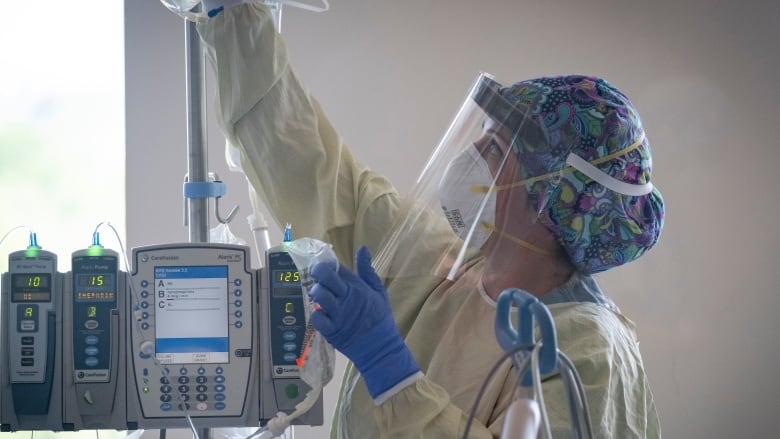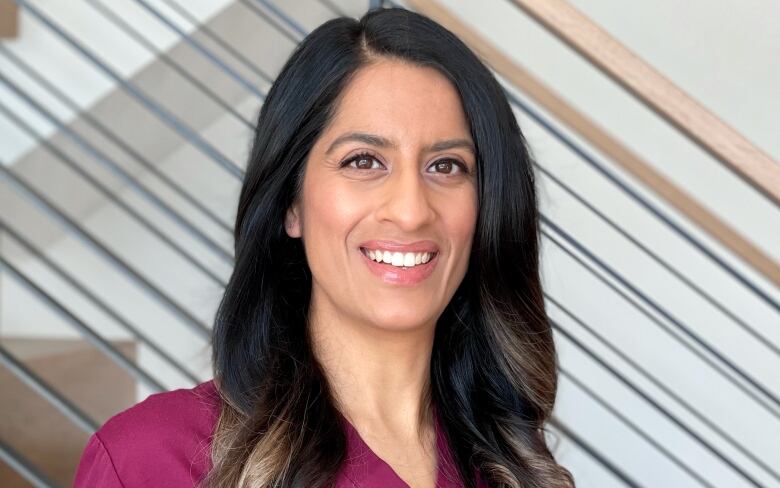Doctors monitor how Alberta's variant-driven 3rd wave could impact children
Albertans ages 5 to 19 have 2nd-highest COVID-19 case rate in the province

Alberta pediatricians are bracing for what could come as variant cases spike, hospitalizations grow and the province falls into the gripof yet another wave of COVID-19.
As of Thursday,175kids and teens have been hospitalized with COVID-19 since the start of the pandemic. That's up from37 in November. Total ICU admissions have also jumped, from five to 35, according to provincial statistics.
"Fortunately in Alberta, no child or adolescent has passed away from COVID-19," said Dr. Jim Kellner, pediatric infectious disease specialist at the University of Calgary and member of the national COVID-19 Immunity Task Force.
He says the bulk of those hospitalizations occurredduring the second wave, and Alberta Children's Hospital where he treats children has very few kids admitted with COVID-19 right now.
But he's growing increasingly worried as cases rise rapidly in the community, driven by the more transmissible B117 variant.
"My level of concernI would say is moderately high to high," said Kellner, who is keeping a close eye on the numbers, particularly because recent evidence out of Ontario shows the variants primarily the B117 strain are not only more infectious, but they're also leading to higher rates of hospitalization and death in adults.
"How that's going to roll down to children, we'll get a better sense of over time," he said.
"But we're anticipating that because it is now moving towardbecoming the predominant strain that we should expect that even if we do our best to try to control the numbers, that the cases that occur could be more severe. So I would say over the next few weeks we'll get a sense of how that's impacting more severe outcomes in children."

Young people between five and 19 have the second-highest COVID-19 rate in Alberta, behind those 20 to 29. And case numbers are climbing quickly among most age groups.
CBC News asked Alberta Health for a breakdown of variant cases by age, but the province declined to provide that information.
"We are not providing a variant-specific age breakdown, but they are consistent with the age range of other strains to date," a spokesperson said in an email to CBC News.
More cases showing up in the ER
In Edmonton, Dr Shazma Mithani who works in both pediatric and adult emergency rooms is starting to see evidence of the third wave among children.
"We are starting to see a bit of an uptick in children who are being diagnosed with COVID in the hospital," she said.
Mithani says there was a lull in early 2021 but she's doing a lot more COVID-19 swabs on children in the ER now. While most cases are mild enough to be discharged, the variant is always in the back of her mind.
"My main concern is with the variants of concern specifically the B117 variant starting to occupy a larger proportion of our case numbers," she said.
"I'm definitely worried about what sort of impact that's going to have on our pediatric population and even our young population, in the higher teens [and people in their] 20s to 30s."

Mithani says she's also seeing more cases of multi-system inflammatory syndrome (MIS-C),a serious immune response in children that shows up weeks after a coronavirus infection.
MIS-C is a rare condition that can be triggered by COVID-19, causing severe inflammation in organs such as the heart.
"They come in with a fever, with low blood pressure that can sometimes require special medications and many of them are needing admission to the intensive care unit or the hospital ward. So we're definitely seeing an increase in those presentations over the last month or so."
According to Alberta Health, 20 cases of MIS-C have been confirmed in the province and all of them have recovered. In November 2020, there had been a total of seven.
"The timing certainly bears out in terms of being one to three months after that big second wave we had in late fall and early winter. And so it's not surprising that we're seeing these MIS-C cases present now to hospital," said Mithani.
MIS-C could be occurring more often than the confirmed case numbers show.
According toKellner,doctors suspect the syndrome quite often now but the diagnosis may not always be confirmed if there is nopositive COVID-19 test or known contact with a confirmed case.
"We have gradually seen more children with either suspected or proven MIS-C," he said.
"I can't put an exact number on it except to say for sure for every child where the diagnosis for MIS-C is made, there will be some number more of children where we think about it but [the diagnosis] doesn't end up getting made because you don't have enough information to call it that."
According to Kellner, while there are many questions about how the third wave could impact children, the data so far reveals Alberta kids and teens have had significantly lower rates of severe outcomes than adults.
Roughly 0.6 per centof all those 19 and underwith COVID-19 have ended up hospitalized, and 0.1 per cent have requiredICU admissions. There have been no deaths.
Childrenaccount for 21 per cent of all COVIDcases in Alberta.












_(720p).jpg)


 OFFICIAL HD MUSIC VIDEO.jpg)
.jpg)



























































































